Completing the job entry
After saving a new job in RB9, additional sections appear in the Edit Job screen. Let’s look at these sections:
Parties
The first section is Parties, where you can enter all parties associated with this job.
If you receive a notice from the client, one thing that notice will list is the involved parties. It’s good practice to add all the parties listed on the notice to the Parties section of the job. This way you have a record of those parties in RB9, and will give you advantages in RB9 later on as you perform Production and Turn-in.
Step-by-step instructions
To input a new party, click
 to the right of the section.
to the right of the section. 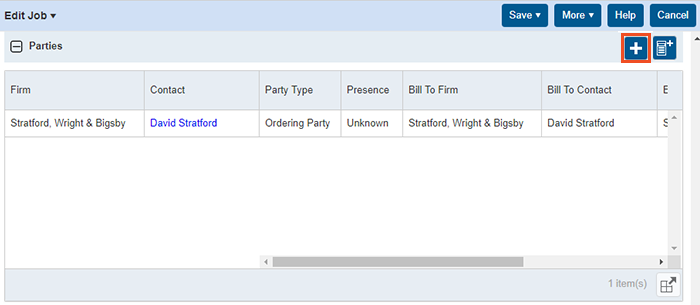
In the Lookup Firm section that appears, search for the party. If the firm does not exist, click New at the top to enter them into RB9.
After selecting the firm, you’ll be taken to the New Party screen. First, select the Contact from the drop-down list. If the contact is not listed, create a new contact by clicking
 next to the drop-down list.
next to the drop-down list.Scroll down to the Billing Info section. If you know the Billing Rate you will use when you bill this party, you can select that rate from the drop-down here. Then, if this party is prefilled from the job when creating their order, the billing rate will be tied to their invoice automatically and your biller won’t have to select it at the time of billing.
Below the Billing Rate fields is the Bill To section.
- If the client is to receive the bill when you create an invoice, then slide Same as Sold To to Yes.
- If they’re telling you the job is going to be billed to a 3rd party, then leave the slider set to No and click
 (Look up) next to the Bill To Firm field. That will allow you to search and select a different firm, usually an insurance company, and set that firm as the Bill To Firm.
(Look up) next to the Bill To Firm field. That will allow you to search and select a different firm, usually an insurance company, and set that firm as the Bill To Firm.
With the Bill To Firm set, set the Bill To Contact by clicking the drop-down next to the field and selecting the contact, who is usually the insurance adjuster. When billing an insurance company, you will need to add more detailed information that pertains to the case so the insurance adjuster will know what the invoice pertains to. That’s where the Claim No., Name of Insured, Date of Loss, and Direct Billing Notes fields will come into play. Whatever you input into those fields will automatically print on the invoice. Client Matter No., which is a number designating the client combined with a number designating the case, and Client ID for LEDES 1998B, which is the party’s ID number, are both used for electronic billing.
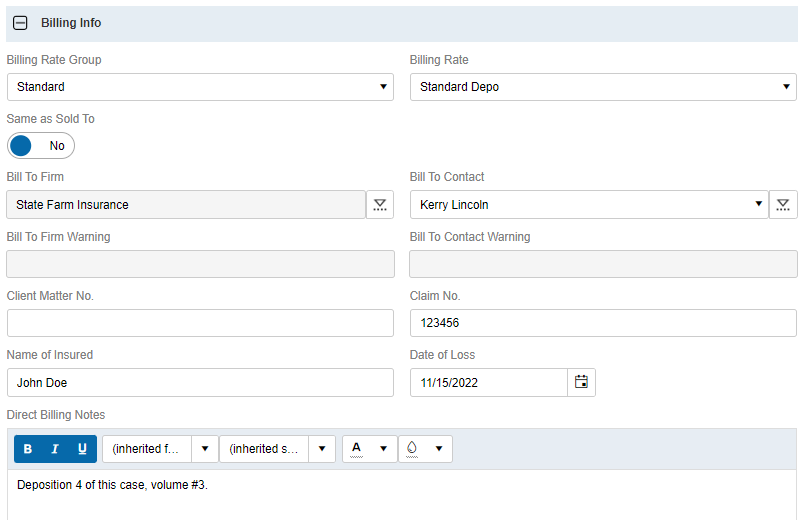
-
Once you’re done setting up the new party, click Save > Save and Close. Repeat these steps to create more job parties if needed.
Specialties
The next section of the Edit Job screen is Specialties, where you enter any special skills, traits, or requirements the resource assigned will need to fulfill the job.
NOTE: You create specialties in Setup > Lists (refer to the List section of the RB9 User Guide). You should also make sure you’re adding specialties to your Resources setup as well. Only add specialties to a resource that they can fulfill as a duty or requirement of the job.
If the job does not require any specialties, skip to Tasks to enter parts of the job that require a separate resource (person, company, thing) to accomplish.
Step-by-step instructions
-
Let’s say this job requires a Realtime Reporter. In the Specialties section, click
 to add one.
to add one.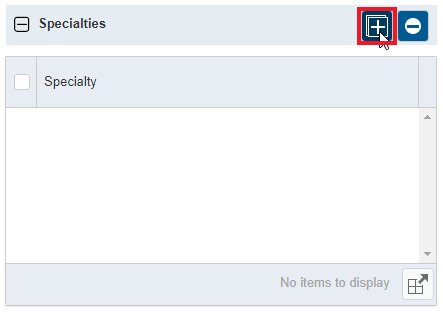
In the Add Specialties section, RB9 lists all of the available specialties in your system. Let’s check “RealTime” and click Save.
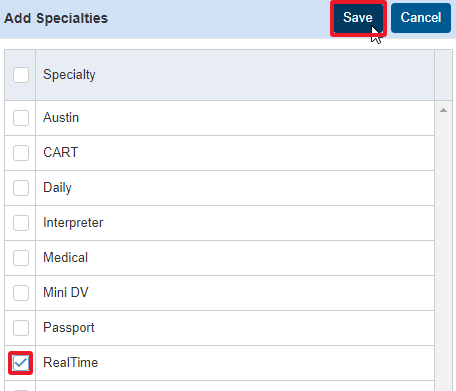
- “RealTime” is now listed under Specialties. This will make assigning a Realtime Reporter easier because when RB9 shows your list of resources that are available to be assigned to this job, the system will only display resources with RealTime added to their Resource setup. Anyone who does not have that specialty in their setup will not appear in the list of available resources for this job.
Tasks
The next section in the Edit Job window is Tasks. When you initially save a job in the calendar, RB9 can automatically create a task and set it to your default Task Type. A task is a part of a job that requires a separate resource (person, company, thing) to accomplish. In general, tasks are work that is performed outside your office by other parties. Work performed in-house is usually not considered tasks in RB9.
In my example below, you can see there is an Undefined task listed. (If you do not want RB to create a task automatically every time you save a job, that setting can be found in System Preferences.)
Step-by-step instructions
Click the default task listed to update it.
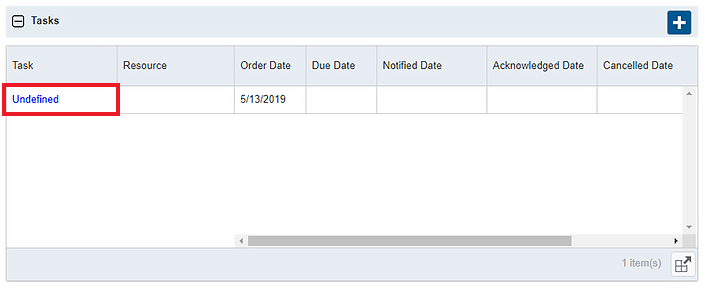
In the Edit Task section, click
 to the right of the Task field, then select the type of task needing to be completed for this job.
to the right of the Task field, then select the type of task needing to be completed for this job.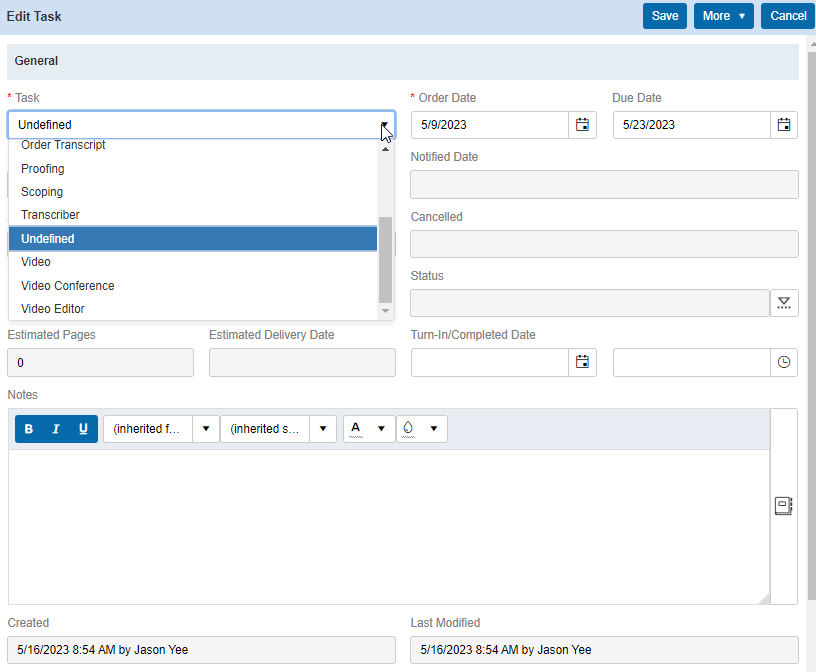
You should be asked if you want to change the due date on the task. Click Yes, and RB9 will calculate the due date. (If you are not asked that question, go to your BU setup and make sure all due days are set for all Task Types).
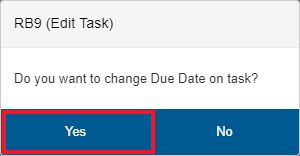
Click Save to return to the main screen of the job setup. You should now see the updated task.
If you have additional tasks to enter for this job, click
 and repeat this process for each task.
and repeat this process for each task.Click Save > Save & Edit if you have more to add or Save > Save & Close when finished.
Repository
The last section in a job screen in the Repository. See step 1 for instructions for uploading files to the Repository.
Next step Pre-assigning resources
If you do not pre-assign resources, you can skip to Confirming next-day calendar.
